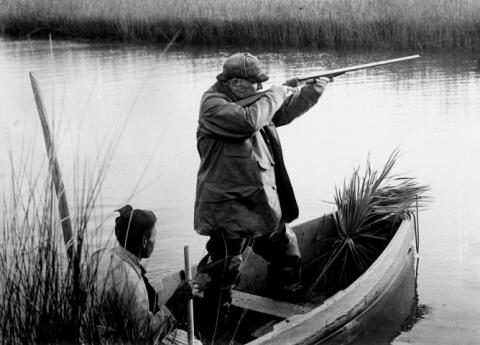Bob Humphrey
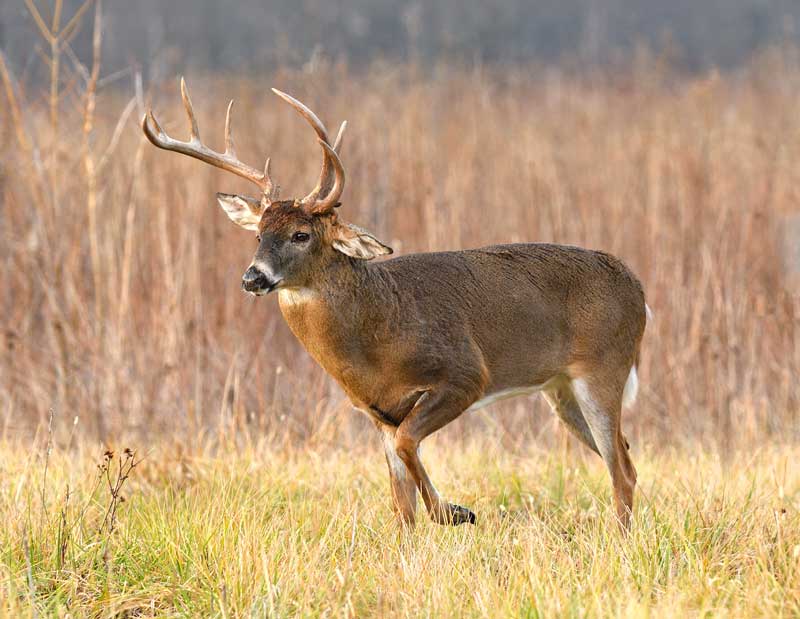
The flashing of a white tail bounding away through the brush, the sharp snort of a wary doe on a frosty morning, and the nasal grunt of a randy buck all quicken the pulse of any deer hunter, but nothing stirs their blood and captures their imagination like the sight of a set of whitetail deer antlers. Whether it’s learned or innate, we humans are enraptured with how Mother Nature forges the fastest growing tissue in the animal kingdom into wonderful works of beauty. Thick, gnarly, chocolate-brown bases curve up, then forward to support a picket of ivory tines, a magnificent masterpiece is grown. They are used to procure breeding and social status, for protection, and to impress the ladies, then cast off all in a single year. In a past issue we looked at how antlers are formed. This time we’ll take an in-depth look at the end result.
What Are Deer Antlers?
At the risk of diminishing their magnificence, it helps to understand more about antlers by learning what they’re made of. In simple terms, they are bone and are unlike horns that are made of keratin (modified hair follicles), which are permanent. They are an extension of the skull, albeit temporary, that start as a porous framework covered in a velvety coat before they become mineralized and literally die. They grow, die then are shed in a single season, only to be replaced with another set the following year, and while they come in a range of shapes and sizes they have a similar general morphology.
The pedicle is the point of attachment (and eventual detachment) between the antler base and the skull. Just above this is a knobby flange called the burr. The main beam is basically the foundation of the antler, from base to tip, and from which all other structures grow. The first section, from burr to the first point is the antler base. In scoring charts, it’s referred to as “H1.” The small, knobby bumps more common on the base are called perlations. The first points or “tines” are commonly referred to as the “brow tines” (G1), but are occasionally assigned more colorful terms like “eye-guards” or “tater diggers,” to name a few. Successive points or tines typically grow upward from the main beam as you move from base to tip. A typical antler could have as few as one or as many as six or more typical points growing more or less perpendicular to the main beam with both antlers forming a fairly symmetrical rack. But not with all bucks….
In general, anything deviating from this basic, symmetrical configuration is considered an atypical or abnormal point. Some individual points may split or fork, which could be a vestige of common ancestry that is more common in other deer species like mule deer. Smaller, asymmetrical points growing off the main beam, or other points are sometimes called “kickers” or “stickers.” Those growing downward from the main beam are appropriately referred to as “drop-tines.”
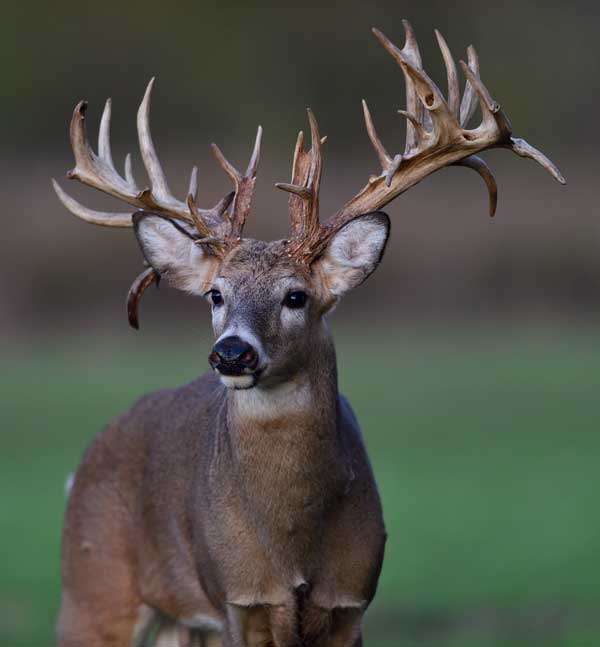
Whitetail Deer Antler Size
Just about every whitetail hunter is aware the three factors most influencing antler size are:
- genetics
- nutrition
- age
As the latter is by far the most important, we’ll look at that first.
Antlers and Age
Button Bucks
Entering his first fall, a young buck will already show evidence of his future potential with a pair of tiny protuberances on the top of his skull that give the “button” or “nubbin buck” its name. In some cases, they may merely be bumps under the skin. In others they may be small, leathery patches. Though less common, early-born buck fawns or those in areas of abundant nutrition may even sport tiny, bony nubbins. Real antler growth won’t start until the deer is about a year old.
5 TIPS FOR AVOIDING BUTTON BUCKS
Yearling Bucks
The first real bony antler growth occurs after a young buck’s first birthday. It is fairly common for yearling bucks to grow a single spike, thus the name: “spike-horn.” While it looks more like a point it is, for all intents and purposes, the main beam as well. It’s also quite common for this first growth to split or fork, leading to the term: “fork-horn.” It can sometimes be difficult to tell which branch is a tine and which is the main beam but unless you plan on scoring your “forkie,” it really doesn’t matter. And if you do, just pick whichever configuration gives you the best score.
While spikes and fork-horns antlers make yearlings easy to pick out, a word of caution is advised. Yearlings with good genetics and/or in areas of exceptional nutrition can and often do grow racks with multiple points, possibly six or even eight. The racks are usually small and thin but it’s possible the occasional yearling might just slip into the shooter realm of some antler restrictions.
Speaking of management, there was a time when yearling spikes were considered inferior and culling was recommended. Decades of research have proven that false. Yearling spikes are quite common in all areas, even under the best conditions, and given a year or two will catch up and can even surpass their peers. There are exceptions, but for the most part there’s no reason to cull spike yearlings. Let them go and they will grow.
Two-Year-Old Bucks
From their second birthday until they’re third, humans and just about every other animal are referred to as being “two.” I guess it’s because we harvest them halfway through the year, but deer biologists feel the need to assign lengthier and completely unnecessary terms like “and a half” to their age, sounding like a two-year old telling you their age. So you’ll frequently see “2.5” or “two and a half.” I prefer the former, obviously any deer taken during hunting season should be close to “and a half” in whichever age class they’re in.
This is the year when a buck really starts to show its potential for antler growth. Again, depending on genetics and nutrition, their rack could sport six, eight or more points. Beams become heavier and tines longer and the rack begins taking on its characteristic form that shouldn’t change much, barring disease, injury or old age.
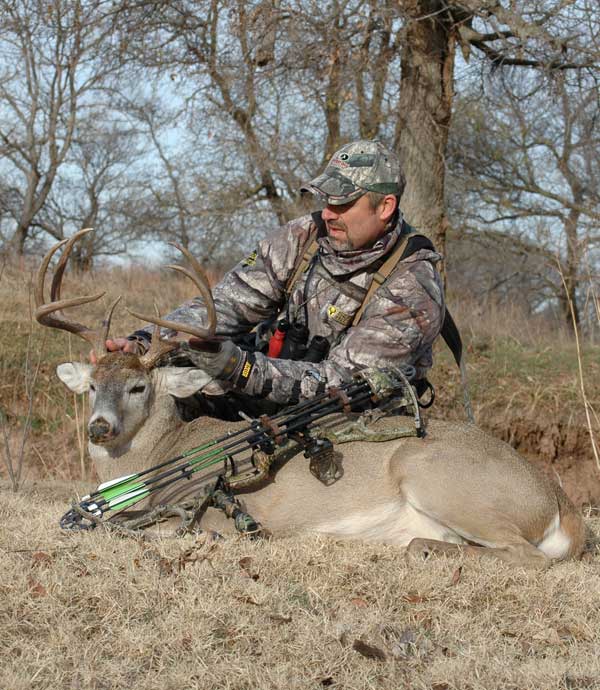
Mature Bucks
Four is a big birthday for a buck. At some time in their fourth full year, skeletal growth ceases. They have reached maturity. That’s important because antlers are a “luxury item.” Previously, minerals and nutrients taken in while feeding were directed to body maintenance and skeletal growth first, and antler growth second. Without need for the latter any longer, more resources can now be directed to antler growth each season.
In the whitetail world, size does matter and larger antlers are an indication of a healthier individual. The deer that sports them may not recognize it, but rivals and potential mates do. Stature, dominance and individual behavior also factor in so the picture is not quite that clear, but antler size definitely represents fitness.
A mature deer will be in its prime and should sport a large set of antlers (all other things being equal) for several years. Just like humans, should they live long enough, age eventually catches up with them. Body systems start to break down and antlers, among other things, suffer. In some cases, the first evidence is not in loss of mass or tine length but in symmetry. Older deer may grow more non-typical points.
Antlers have many fascinating qualities, one of which is the way to respond to injury. If a deer experiences injury to a leg on one side, they will often grow a non-typical antler on the opposite side the following year. Sometimes this aberration persists and sometimes it fades over time depending on the type, extent and location of the injury. Maybe non-typical antlers in older deer are from an accumulation of head butts and tine jabs over the years. Or, they could be a genetic predisposition.
There’s conflicting evidence on how much mineral supplements can enhance antler growth, but lack of proper minerals can definitely detract. Deer in areas lacking the right type and amount of minerals will have lighter, weaker racks more prone to breaking. I’ve held antlers of similar size but from different regions and the weight difference can be surprising.
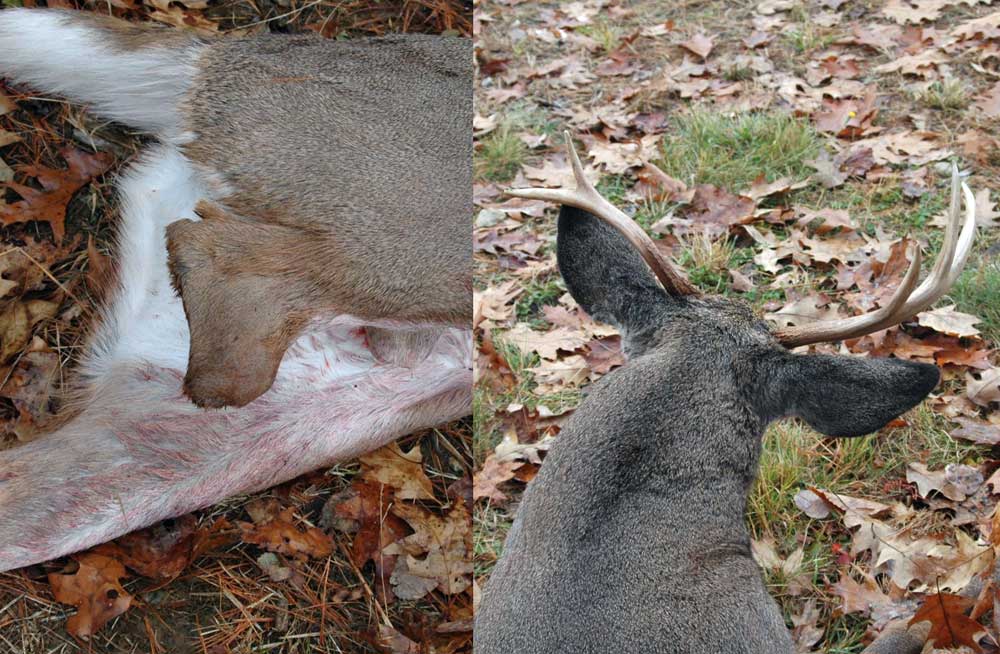
Deer Antler Shape
Anyone who has adored antlers has probably pondered why they are shaped the way they are. Nature has a reason for everything. While it may not seem so to anyone who has dragged a big buck out of the woods, the shape and configuration of whitetail antlers is what nature has determined is optimal for the habitat in which they live, all other things taken into consideration.
While most share the same basic forward-facing beams and upright tines there is considerable variation among them. Some grow more upward, others more forward. Some square off and point forward while others curl around, in some cases nearly touching and in others crossing at the tips. While there’s enough genetic drift to keep things variable, certain shapes and characteristics do tend to repeat themselves in sub-populations.
Deer Antler Color
While we know a lot about antlers we don’t know everything, and one of the great remaining mysteries is how they get their individual coloration. Several theories exist, though none has yet been proven conclusively.
Color often varies with habitat and some have suggested color variations result from the type of trees that are rubbed and how the sap reacts with dried blood. Northern deer inhabiting predominantly coniferous forest tend to have darker antlers while those in the Midwest and western areas dominated by poplar and hardwoods tend to be lighter, but not always. Bob Zaiglin, coordinator of the wildlife management program at Southwest Texas Junior College in Uvalde Texas has observed hundreds of bucks confined in breeding facilities containing only mesquite trees, and their antler colors varied from light to dark.
Perhaps it has something to do with exposure to sunlight. Evidence exists in bucks from areas dominated by dense softwood forests like Alberta, Saskatchewan, Maine and Quebec's Anticosti Island, all famous for their dark "chocolate" colored racks. Comparatively, bucks from more open habitat are often lighter. However, some bucks from all these areas exhibit a range of rack tones.
Maybe it’s related to genetics. While the whitetail’s winter coat is generally grayish brown there is a fair degree of variation within those tones between individual deer. Perhaps the same is true for antlers. Noted whitetail photographer Charlie Alsheimer, favored this based on decades of observing and photographing captive whitetails that, like Zaiglin’s deer, rubbed the same tree species but had different colored racks.
Yet another theory, which also has substantial supporting evidence, suggests age may play a role. Darker racks tend to be more common in older deer and it is believed this is because they require more blood and chloroplasts, which react with sap during the velvet shedding phase, and could result in darker color.
Or perhaps it’s some combination of some or all of the above. Genetics not only influences physical appearance; it affects behavior. Individual bucks sometimes show a preference for rubbing certain species of trees and shrubs, which could result in different antler coloration. Diet could also be a factor. Regardless, there’s enough difference within and among different populations to keep us wondering why.
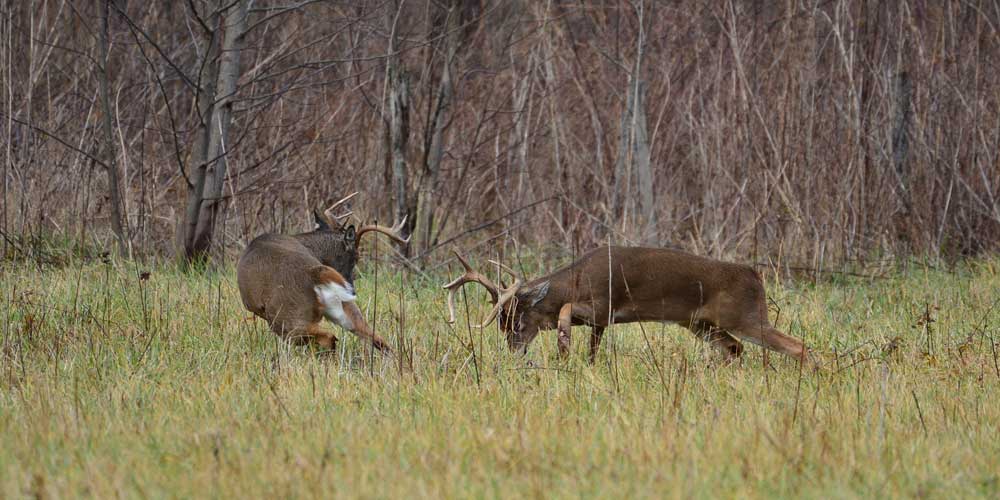
Purpose of Deer Antlers
One of the first steps in putting antlers to use involves shedding velvet. The last step in antler growth involves mineralization. Then circulation is cut off, the antler dies and velvet begins peeling. It would eventually come off on its own, but bucks speed up the process by rubbing trees. Because of the nutrients in the velvet it has been seen being eaten off shedding bucks by other deer or some birds. In addition to removing velvet, rubbing creates a visual sign in the form of lighter exposed cambium or sapwood. It also leaves an olfactory signal of secretions from the forehead glands. Early rubs created during the shedding process may not be revisited by bucks. They will create and use traditional signpost rubs that they and other deer will use throughout their life to communicate their presence and perhaps status in the herd.
Bucks are usually still in bachelor herds around the time velvet is shed and will soon begin sparring. These early episodes are often somewhat casual and more of a shoving match. This helps to sort out dominance and strengthen neck muscles. The process is somewhat akin to adolescent boys wrestling to see who is the stronger. They’re not really trying to beat each other up… yet.
When breeding season comes around the matches become more serious. While antler size does display fitness, sometimes that’s not enough and evenly matched rivals or bucks with a bad attitude will battle. While a swept back design might be more efficient for fleeing through the forest, it won’t do much good when it comes time to battling over breeding rights. With the antlers of rival bucks being similar in shape and size they can be more easily and safely meshed together for pushing and shoving matches.
At the risk of ascribing human characteristics to animals, bucks are more concerned with out-muscling their opponent than poking or stabbing, though they won’t hesitate should the opportunity present itself. The latter is more dangerous for both opponents.
Occasionally antlers are broken from torque or ramming. Anyone who has handled an antler can appreciate the force or impact necessary to break one. As the antlers are still firmly attached to the skull, this can sometimes result in skull injuries. If the injury is severe enough, bacteria can enter the wound resulting in a brain abscess, which may or may not heal and can be fatal.
As the days grow shorter and breeding season wanes a buck no longer needs his antlers to display fitness or battle rivals. Instead they become radiators, drawing valuable heat from the buck’s body. Physiological changes occur causing the connection between antler and skull to weaken. Eventually the buck sheds his antlers, only to again grow another set.

















